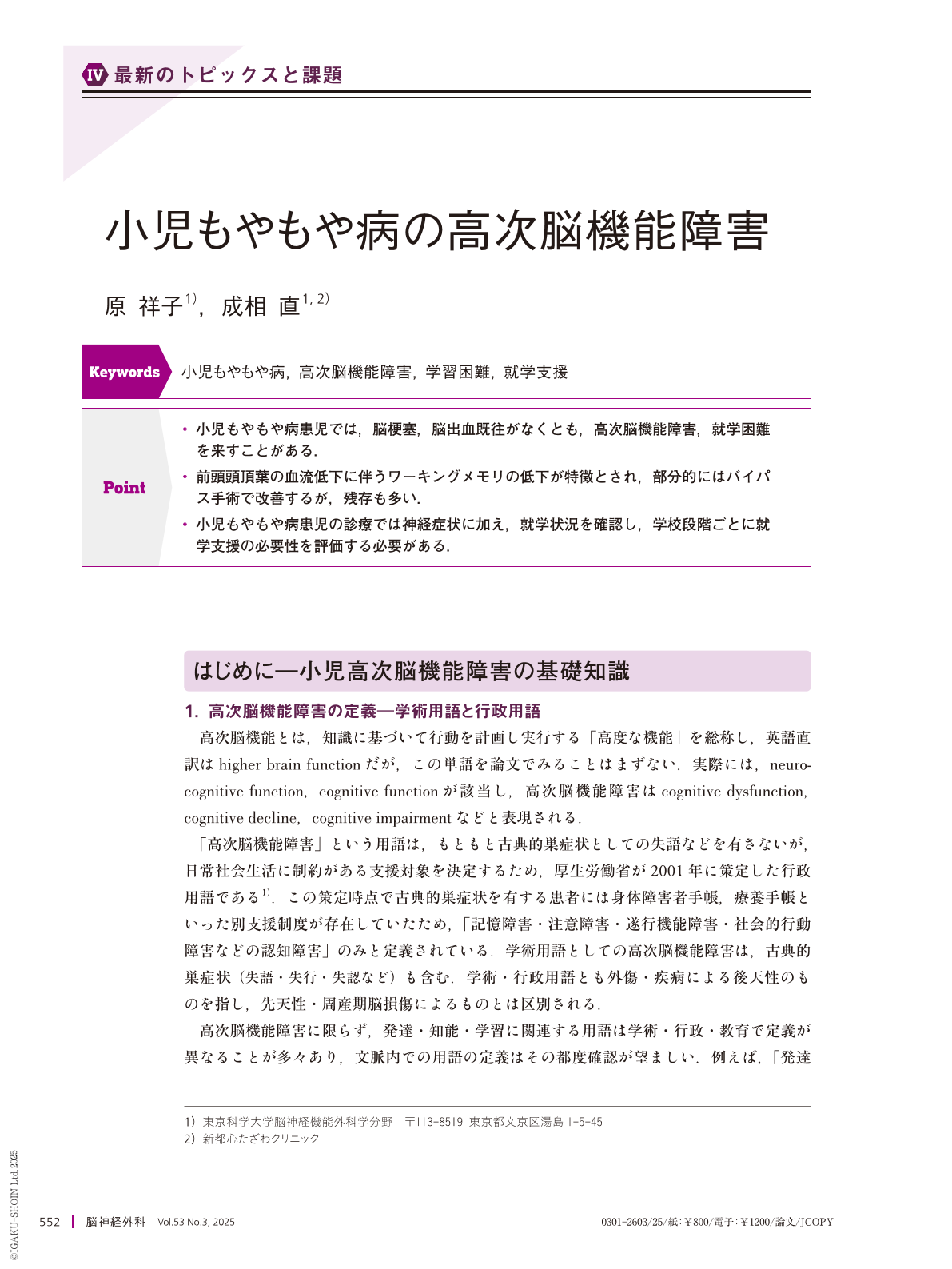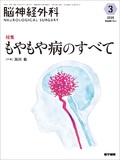Japanese
English
- 有料閲覧
- Abstract 文献概要
- 1ページ目 Look Inside
- 参考文献 Reference
Point
・小児もやもや病患児では,脳梗塞,脳出血既往がなくとも,高次脳機能障害,就学困難を来すことがある.
・前頭頭頂葉の血流低下に伴うワーキングメモリの低下が特徴とされ,部分的にはバイパス手術で改善するが,残存も多い.
・小児もやもや病患児の診療では神経症状に加え,就学状況を確認し,学校段階ごとに就学支援の必要性を評価する必要がある.
Moyamoya disease is rare and affects children and young adults. A substantial proportion of children with this disease experience cognitive dysfunction in some domains even in the absence of ischemic or hemorrhagic stroke. A characteristic feature is a decline in working memory, which is believed to be associated with reduced blood flow and disrupted microstructure in the frontal and parietal lobes. However, the involvement of the temporo-parietal-occipital lobes has also been reported. While successful bypass surgery can improve cognitive decline in some domains, especially the visual-motor processing ability, some patients still suffer from cognitive decline, which negatively affects school learning. As a primary physician of pediatric patients with moyamoya disease, it is essential to assess not only neurological symptoms but also their educational situation and need for support at each school stage. Furthermore, since children with moyamoya disease will have a long life after initial treatment, it is crucial to transmit our knowledge and current challenges to healthcare providers in the next generation to ensure appropriate support throughout the patients' lives.

Copyright © 2025, Igaku-Shoin Ltd. All rights reserved.


